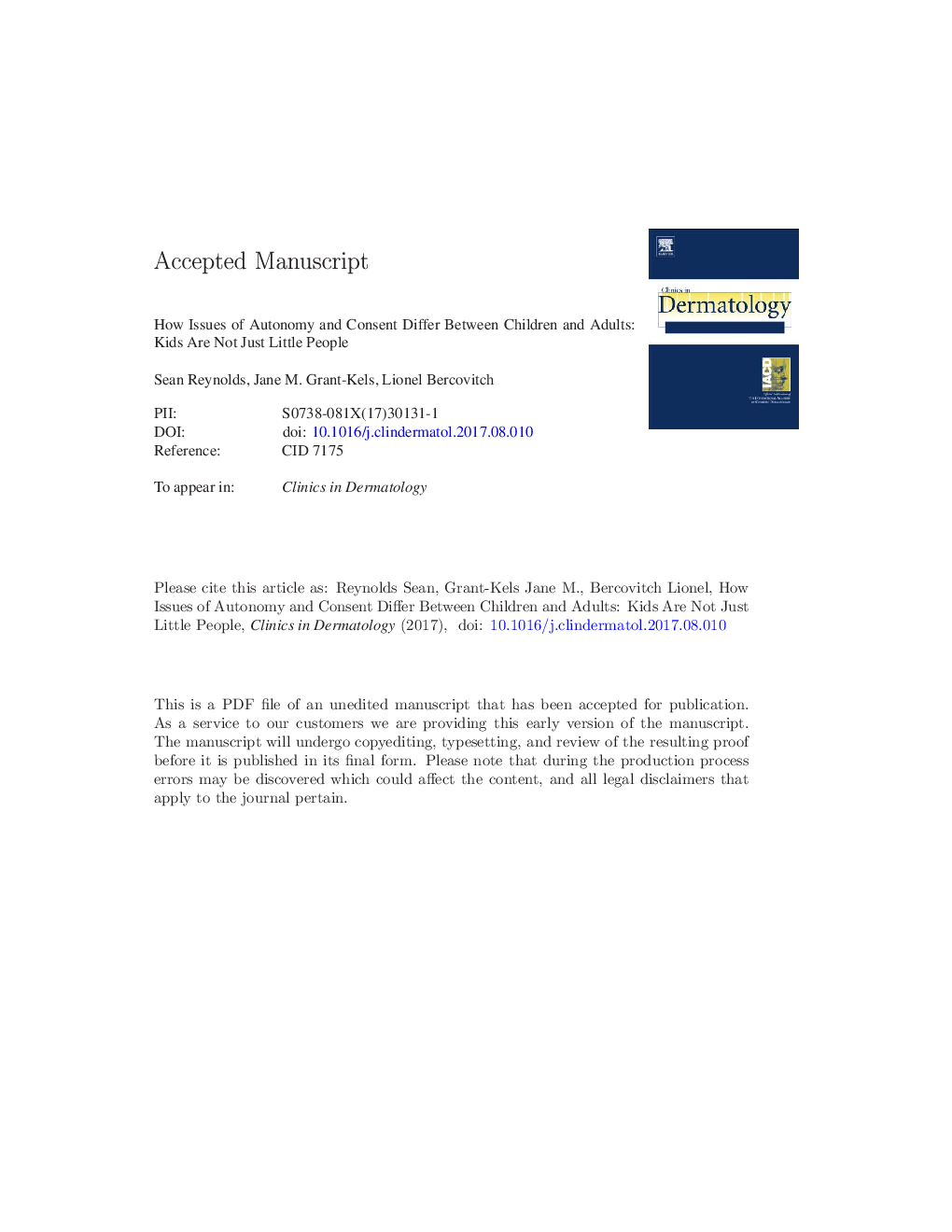| Article ID | Journal | Published Year | Pages | File Type |
|---|---|---|---|---|
| 8712380 | Clinics in Dermatology | 2017 | 13 Pages |
Abstract
Decision making in dermatology practice with adult patients is in most cases a relatively straightforward process, involving a back-and-forth exchange of information, ideas and opinions between the physician and patient. This process is more complex in the field of pediatric dermatology. It involves the triad of the patient, parent or guardian, and physician. It utilizes a model, common to many fields in pediatrics, whereby the physician seeks to obtain informed permission from the parent with the assent of the child, all the while endeavoring to act in the best interests of the child. This model can be challenged in many ways; from parents seeking interventions, which are not in the best interests of the child, to a child refusing to assent to a procedure that is deemed necessary by the parent and physician. We review the theory, terminology, and guidelines relevant to the ethics of decision making when working with children compared with adults. We explore approaches to a variety of ethically challenging situations that may be encountered by the dermatologist, through their work with pediatric patients.
Related Topics
Health Sciences
Medicine and Dentistry
Dermatology
Authors
Sean MD, Jane M. MD, Lionel MD,
